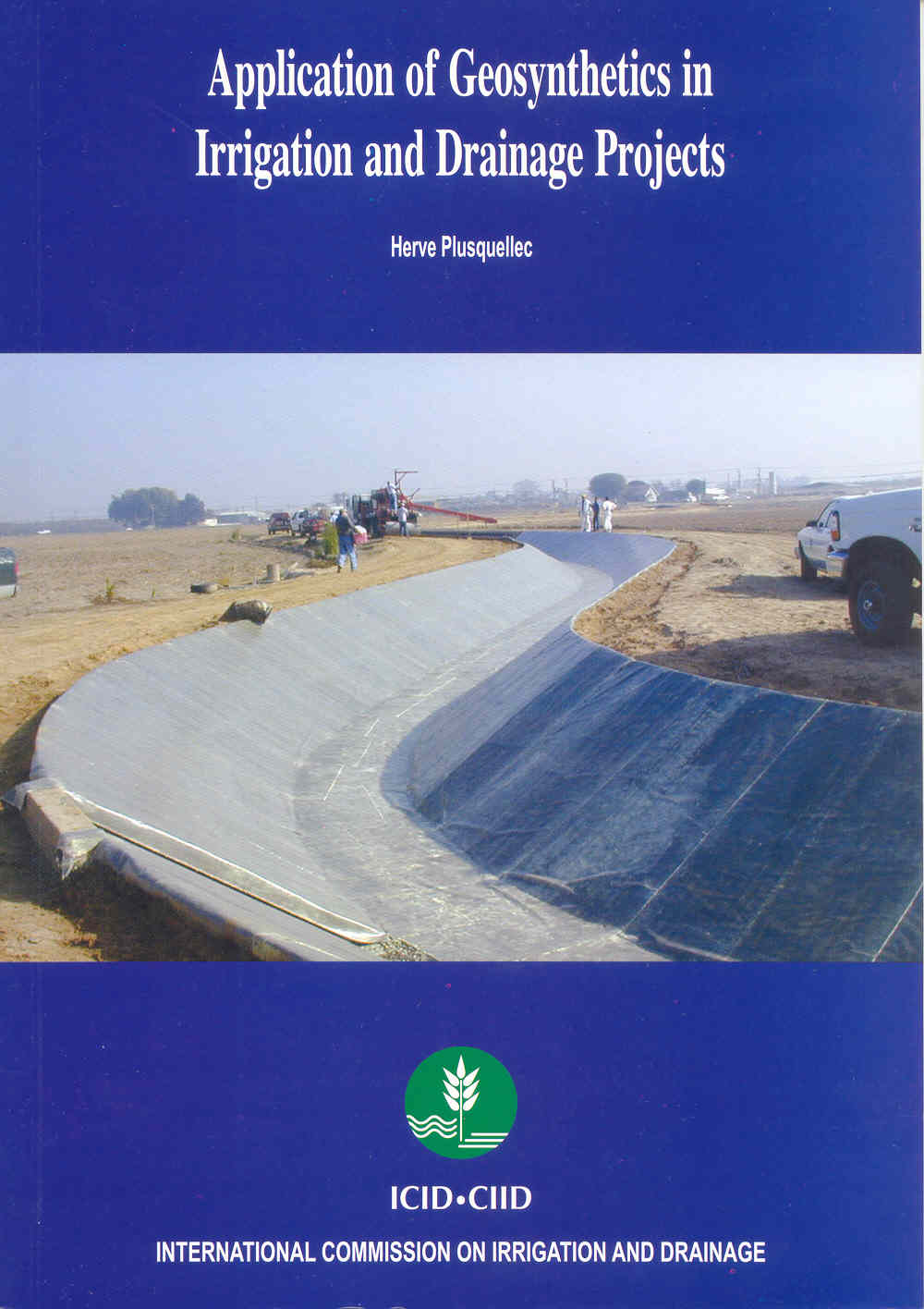
Application of Geosynthetics in Irrigation and Drainage Projects

Author: Author: Herve Plusquellec (USA)
Year: 2004, ISBN: 81-85068-88-7
Type: Special Publication, Format: Print
Conservation of water resources is becoming increasingly important as the demand for water from agriculture, domestic and industrial sectors and ecosystem rises rapidly and the new sources of supply become scarcer. There is increasing evidence that conventional methods using hard/rigid surfaces to reduce seepage losses from irrigation canals are not performing as expected. Drainage problems are often amplified as a result of excessive seepage losses from canals. In this context, adoption of innovative construction techniques in irrigation and drainage projects with the use of geosynthetics is an important step forward. The generic term ?Geosynthetics? is used to designate construction materials produced by the chemical and textile industry for use in geotechnical engineering. The geosynthetics industry, during the last three decades has developed a wide range of materials that are useful in the development of irrigation and drainage projects, especially for controlling seepage and erosion. Geosynthetics now provide unprecedented possibilities for design and construction of low embankment dams, cost effective solutions for slope and channel protection, and long term solution for control of seepage losses from reservoirs and channels. It is now possible to find a geosynthetic material that meets project specifications and has durability consistent with the project design life, even under extreme climatic conditions. Experience of application of geo-synthetics in several countries has amply proved their superiority over the traditional hard/ rigid lining materials in respect of quality, saving in cost and time of installation, especially for irrigation canals in operation. The book provides information on the wide range of geosynthetics and their potential application to irrigation and drainage projects. The controversial issue of lining or not irrrigation canals and the design and construction issues of lining with conventional hard materials or with the use of geosynthetics is discussed. Special attention is given to the techniques to line existing canals with minimum interruption of irrigation service with the use of geocells, concrete-filled mattresses or field fabricated geocomposite for example. Finally the book discusses the selection of geomembranes based on the technical service requirements-and not purely on cost considerations-and discusses the two main procurement methods based either on material-specific or performance-specifications. The book contains more than 20 coloured photographs of actual installations and use of geosynthetics in various irrigation projects world over. The book provides a list of international organizations involved in the development of geosynthetics and providing services to the industry and to their clients, model of performance-type technical specifications for the supply and installation of geomembranes, and technical specifications for the supply of laboratory equipments. This book is of great interest to various agencies dealing with execution of irrigation and drainage projects, irrigation and drainage engineers, planners, and financing and research institutions. It is hoped that it will stimulate consideration of the use of geosynthetics in upgrading existing irrigation systems in need of rehabilitation and modernization. The book will be useful, particularly for developing countries where its application is not keeping pace with the development of geosynthetics industry but massive investments are taking place for modernization/rehabilitation of irrigation and drainage systems. ICID has brought out this book to keep the professionals abreast with the advances in the rapidly changing and expanding geosynthetics technology. Mr. Plusquellec, author of the book, has compiled available information on different types of geosynthetic materials and provided practical tips for selection, installation, procurement and quality control to facilitate safe design and construction of structures incorporating geosynthetics. Mr. Plusquellec has extensive field experience in design, management and performance assessment of irrigation projects world over during his tenure with the World Bank. He has direct experience in the use of geosynthetics in large irrigation projects in Middle East, South Asia and China. Geosynthetics experts Mr. Michael Snell, UK and Mr. Peter Stevenson, Secretary, International Geosynthetics Society (IGS) have reviewed the document and Prof. J.P. Giroud, President Hon., IGS has provided prologue to the publication.


